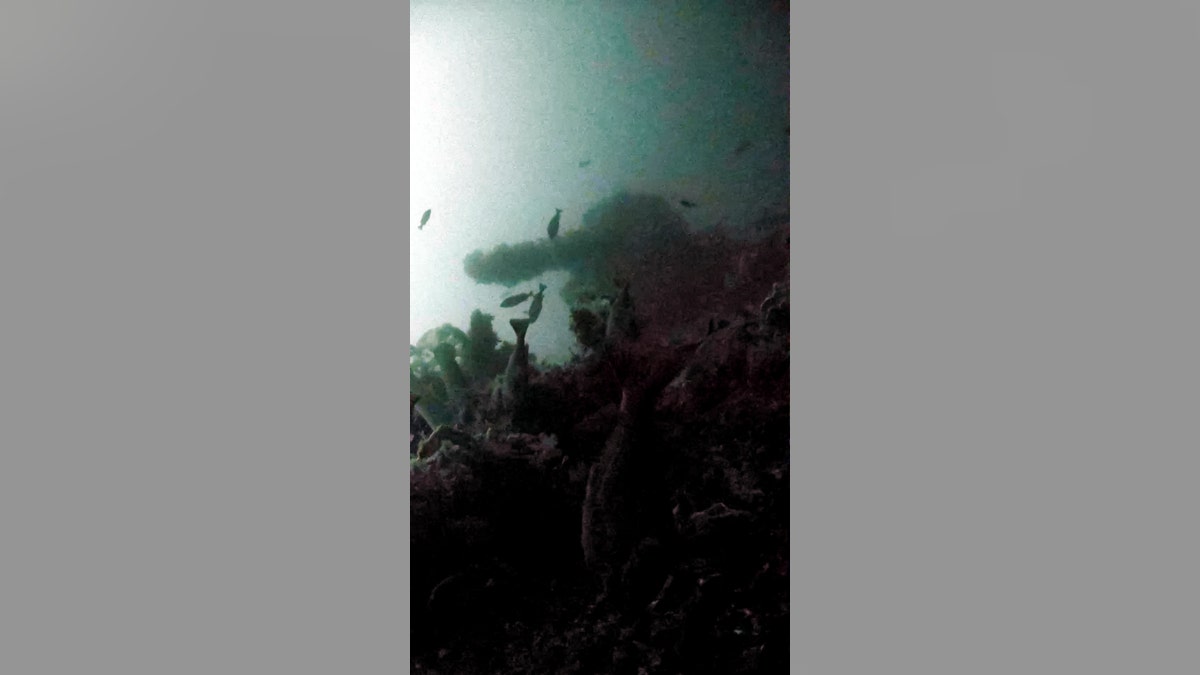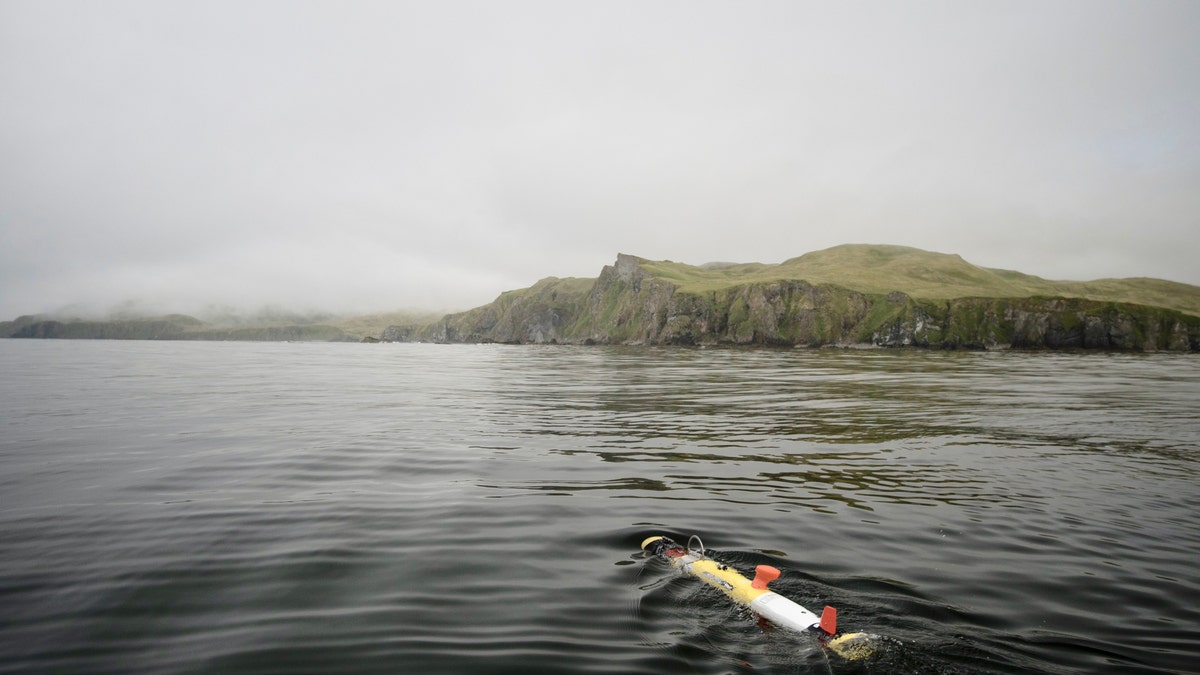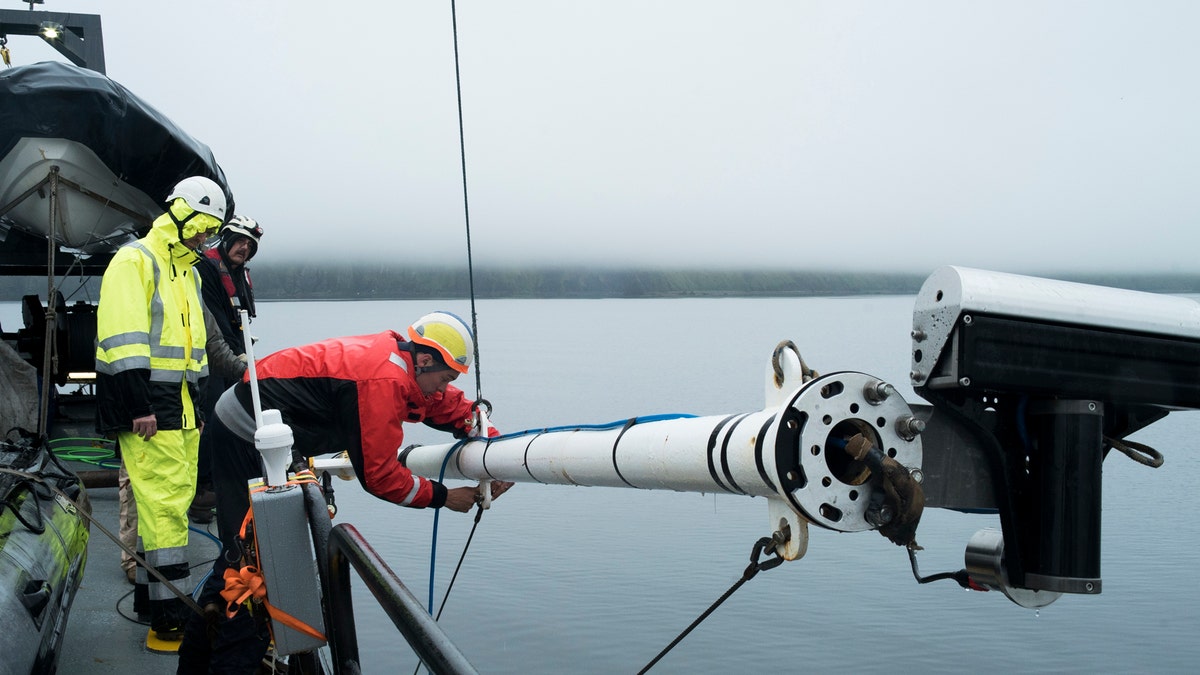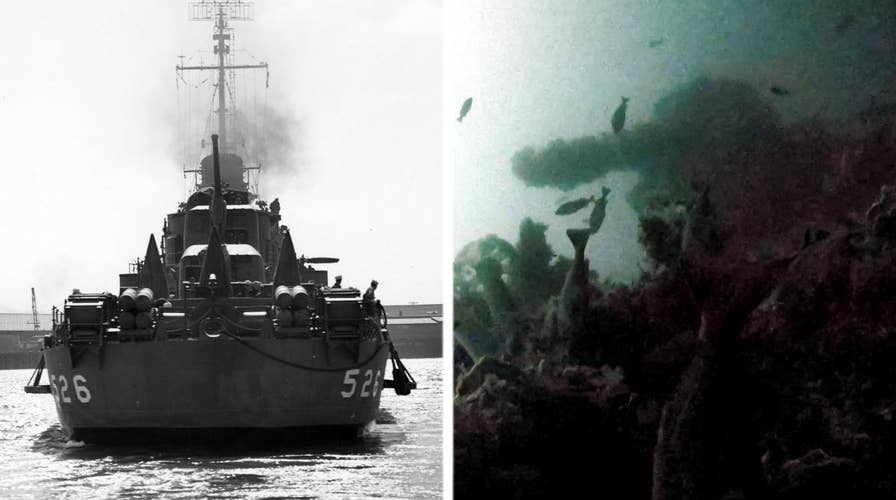World War II-era destroyer’s stern found off Alaskan island
Researchers found the missing 75-foot stern section of the destroyer USS Abner Read just off the coast of Kiska, Alaska. 71 sailors lost their lives when the ship hit a Japanese mine in 1943.
In 1943, Daryl Weathers was a 19-year-old seaman aboard the destroyer USS Abner Read, which was conducting an anti-submarine patrol in the remote Aleutian Islands.
Almost 75 years to the day since the ship’s stern was torn off by a Japanese mine, the 94-year-old describes the harrowing event and the ship’s incredible survival.
“I had been in the Navy just a short while,” he told Fox News, recounting the predawn hours of Aug. 18. 1943. “We were on submarine patrol. We were making a figure 8 pattern, we had been doing that for a day and a half.”
Suddenly, the ship turned and struck a mine. “Bam! This hit the port quarter, picked up the ship and broke the stern off,” he said, adding that the stern contained sleeping compartments. “The guys were sleeping back there, we lost a lot.”
WRECK OF WWII SHIP DISCOVERED 74 YEARS AFTER IT DISAPPEARED DURING A RESCUE MISSION

The number 5 (aft deck) 5-inch gun of the USS Abner Read imaged via the researchers' Remotely Operated Vehicle (Project Recover)
Weathers is the last known surviving member of the Abner Read’s crew, which was more than 300-strong on that fateful night in the Bering Sea.
Any sailors in the stern that were fortunate enough to survive the blast then had to contend with the frigid Bering Sea. “The water was so cold, you couldn’t be more than 10 or 15 minutes in there,” said Weathers, who helped haul survivors back onto the ship. “There weren’t too many of them.”
Seventy-one lives were lost following the incident. In the aftermath of the blast, 20 sailors were saved when the Abner Read's crew pulled them from the water.
WRECKAGE OF WWII B-24 BOMBER DISCOVERED 74 YEARS AFTER IT WAS SHOT DOWN

A deep-diving Remotely Operated Vehicle was used to scan the seafloor (Project Recover)
For almost 75 years, the Abner Read’s stern has laid on the seabed – a silent witness to the brutal, but often overlooked, Aleutian Islands campaign.
Kiska and the Aleutian island of Attu were occupied by as many as 7,200 Japanese troops from June 1942 to mid-August 1943. The islands are part of a volcanic chain that extend 1,200 miles westward from the Alaska peninsula. Along with Guam, the islands are among the handful of U.S. territories to be occupied by foreign forces in the last 200 years. The Philippines, which at the time were a U.S. territory, were also occupied by Japanese forces during World War II.
American forces were locked in a grueling 15-month campaign to retake the inhospitable storm-battered corner of America.
On July 17, a team of scientists from the Scripps Institution of Oceanography at the University of California San Diego and the University of Delaware located the missing 75-foot section of stern in 290 feet of water off the island of Kiska.

The remote Aleutian Islands extend 1,200 miles westward from the Alaska peninsula (Project Recover)
WWII WRECK USS HELENA DISCOVERED BY MICROSOFT CO-FOUNDER PAUL ALLEN'S CREW
Funded by the NOAA Office of Exploration and Research and supported by Project Recover, experts used multibeam sonar to locate the wreck, which was then explored using a deep-diving remotely operated vehicle.
Bob Cressman, historian at the Naval History and Heritage Command, told Fox News that stern’s discovery is an important reminder of one of World War II’s lesser-known theaters.
“I hope that it opens peoples’ eyes and broadens their understanding of that part of the war,” he said. “For the people fighting, it certainly wasn’t a sideshow, it was deadly serious business.”

The research ship Norseman II that participated in the Abner Read's discovery (Project Recover)
For Weathers, the horrific events of Aug. 18, 1943 are still fresh in his memory. “It was quite a violent explosion,” he told Fox News. “If the explosion had been a few feet further [the ship] wouldn’t have stayed afloat. No water got up into the forward compartments — it was a very clean break.”
HUGE HIDDEN WWII SIGN REVEALED ON IRISH COAST
“There was a fuel tank that was solid from the top to the bottom – no water could get forward of that,” he added. “If it had been a few feet further forward it would have ruptured that and the water would have got into the engine room and we wouldn’t have been able to save [the ship].”
Almost eight decades later, the veteran still wonders at the ship’s survival. “I guess that we had a guardian angel on our shoulder,” he said.

Project Engineer Andy Nager and archaeologist Andrew Pietruszka ready a pole-mounted multibeam unit for survey (Project Recover)
The crew’s heroics also kept the destroyer afloat. Sailors worked quickly to shore up the damage and kept the main part of the Aber Read’s hull watertight. “We built a homemade rudder,” said Weathers.
'TREASURE-LADEN' RUSSIAN SHIPWRECK SPARKS CONTROVERSY
Two nearby U.S. Navy ships towed the destroyer back to port. Within months, the stern was repaired and the Abner Read rejoined the war.
The ship then took part in a number of battles in the Pacific Theater. She was destroyed in a kamikaze attack by a Japanese dive bomber during the Battle of Leyte Gulf in November 1944. “The kamikazes came over … the whole sky was full of anti-aircraft explosions,” said Weathers.
The sailor received the Bronze Star for his "heroic and meritorious" conduct during the battle. "Weathers, with outstanding devotion to duty manned his battery in the face of grave danger from an enemy suicide bomber, which ultimately crashed into his station and wounded him," the citation reads. "His conduct throughout distinguished him among those performing duties of the same character."
The Abner Read received four battle stars for her wartime service.
Like all U.S. military wreck sites, the location of the Abner Read’s stern off Kiska is considered a war grave. “We take any desecration of that wreck site very seriously,” a spokesman for the Naval History and Heritage Command told Fox News. “It’s the final resting place of American sailors - that makes it hallowed ground, as much as Arlington National Cemetery.”
This story has been updated with details of Weathers' Bronze Star that was awarded during the Battle of Leyte Gulf. Additionally, the story has been corrected to reflect that Guam was also occupied by foreign forces during World War II.
Follow James Rogers on Twitter @jamesjrogers

